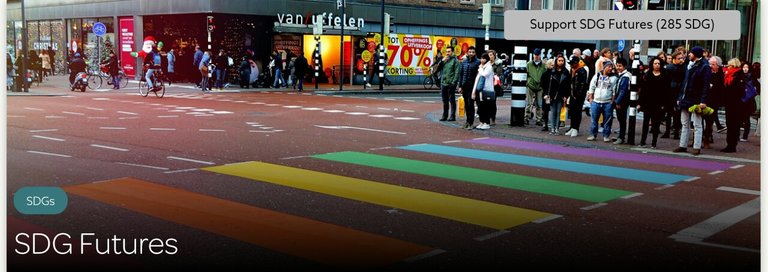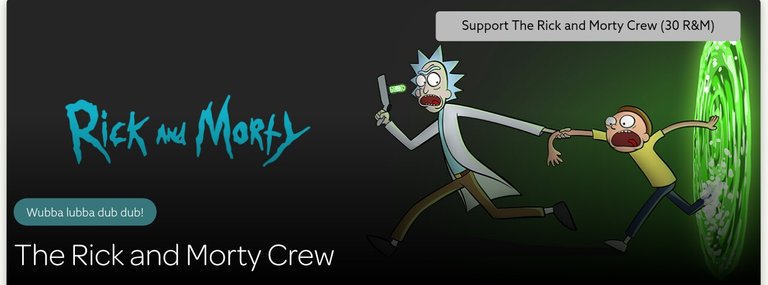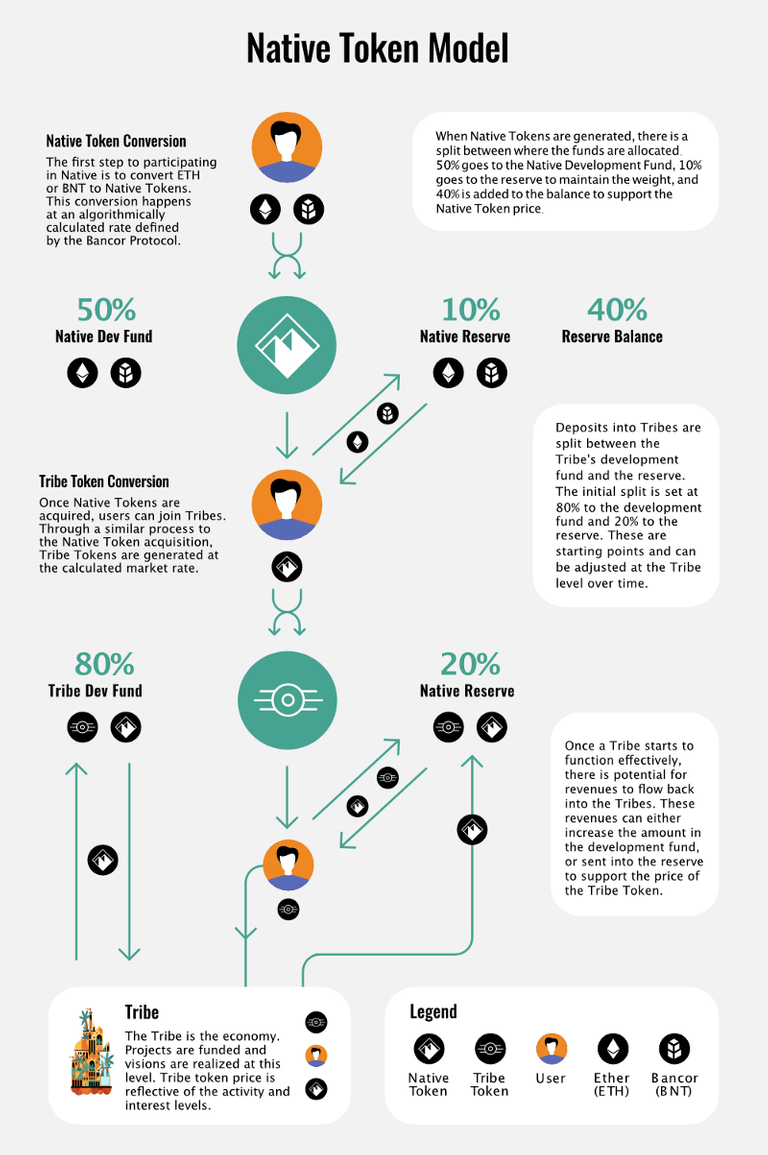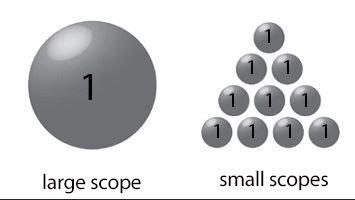

1 – Introduction
2 – Problem definition
2.1 - Lack of Financial and technical know-how of users
2.2 – Large scoped communities
2.3 – No mechanism exists to value community currencies against each
other within a global framework
3 – NATIVE
3.1 – What is Native?
3.2 – Native and blockchain technology
3.3 – Native and the Bancor protocol.
3.4 – Native and true value creation
3.5 – Communities
3.5.1 – Why communities?
3.5.2 – Users of communities
3.5.3 – Features of communities
3.5.4 – Pioneer communities
3.6 – Native token
4 – Native’s solutions to defined problems
4.1 – Easy-to-use platform
4.2 – Communities small enough for effectiveness
4.3 – Mechanisms that value community currencies against each other within a global framework
5 – Applications and Use Cases
5.1 –Application and Use case for tech enthusiasts like me
5.2 – Application and Use case for decentralized zero-interest credit societies
5.3 – Application and use case for Charities
6 – My video on Native
7 – Conclusion

1 - INTRODUCTION
Blasphemy. This was the word the Catholic church leaders termed the heliocentric solar system theory Galileo Galilei had postulated and published in 1632. The theory states that the Earth and other planets revolved around the sun, as opposed to the then popular belief that the Earth was the center of the universe – a belief the Catholic church held unto.
The Catholic church had enormous power and influence in Galileo’s days, and with this power, it forced and intimidated Galileo to renounce his theory. If only Galileo was given a conducive environment to keep on pursuing his passion, only the imagination can tell what more things he could have discovered. Later on, Galileo’s theory was proven to be correct.
Unfortunately, it’s not only Galileo that experienced the horror of being forced to abandon passion in the pursuit of “the normal”. Millions of people have either experienced this or are currently experiencing this, and hence have by default been incapacitated to perform at their maximum capacity, reducing the amount of value they could have contributed both to the advancement of the human race and to themselves.
With the invention of bitcoin and the blockchain technology in 2008, people saw in it a ray of hope, where decentralized communities (cryptocurrency ecosystems) could be created, enabling people participate in areas they are interested in, without the monitoring and interference of governments and banks. With the modification of the bitcoin code, more than 1500 of these decentralized communities (cryptocurrency ecosystems) have been created as of April 2018 Source.
However, this good news came with an Achilles heel – people were scammed of their funds. When less financially savvy people heard of these cryptocurrency projects that promised to provide the environment and equipment to participate in their areas of interest and earn financial rewards in the process, they believed whatever the project advertisers promised, paid money for these projects, and lost all their funds because the projects never existed.
As a solution to this problem, there is therefore need for a trustworthy avenue/platform where people can be equipped and given the conducive environment to maximize their value creation potential (financial value inclusive), by creating non-technical communities with custom-built currencies that can be valued against each other within a global framework, as other people continue to join and participate in these communities built upon their areas of interest.

2.- PROBLEM DEFINITION
Despite the fact that the blockchain technology has opened up possibilities for the creation of decentralized communities powered by custom-built currencies, where people can both create and participate based on their areas of interest, there are still some problems that prevents the system from reaching its full potential.
These problems are as follows:
- Lack of Financial and technical know-how of users
- Large scoped communities
- No mechanism exists to value community currencies against each other within a global framework
2.1 – Lack of financial and technical know-how of users
I remember vividly, when I bought my first bitcoin, I saw an ad that promised that I could earn much more value by exchanging my bitcoin for the crypto being advertised. Because I had very little knowledge about the structure upon which the coin was created and how the crypto industry operated, I was scammed of my bitcoins. I was interested in the project being advertised, but I had no technical knowledge on how the team wanted to achieve their goals.
Just like I was, majority of people lack the financial and technical know-how required to effectively build and participate in decentralized communities. They have ideas based on their areas of interest, and would like to create and participate in communities founded upon these ideas. But because they don’t have the requisite knowledge, they are at the risk of being scammed of their funds by fake cryptocurrency creators.
2.2 – Large scoped communities
Majority of the cryptocurrency community creators had the mindset that the amount of value a system has is equaled to the amount of money the system can provide. Having this mindset, they made the scope of the community very large, so as to attract as much people as possible, hence attracting as much funds as possible.
With the scope being this large, the efficiency of the community in meeting the specific needs of the people who use it is reduced. The community possesses quantity but not quality, hence defeating the original goal of the project, which is to provide an environment for true value creation, and not just money creation.
2.3 – No mechanism exists to value community currencies against each other within a global framework
Communities are powered by their various custom-built currencies. There presently is no way for the value of these currencies to be compared with each other within a global framework, hence reducing their effectiveness and possibility of increasing in value.
From these listed problems, we can therefore see that there is need for a new ecosystem that will provide solutions to them, by providing an environment where non-technical people can build and participate in communities specific to their areas of interest, creating values both for themselves and for those within their communities.

3.0 – NATIVE
3.1 – What is Native?

In general terms, Native is a revolutionary platform whose aim is to give an average individual the environment and equipment required to build or participate in a community that is based on his/her area of interest, creating value both for themselves and members of that community.
More specifically, Native is a blockchain-based ecosystem, structured to provide templates that enable people (even those with limited financial and technical knowledge) create and participate in communities, through decision making tools and custom-built community currencies, with the end goal of creating value for community members.
3.2 – Native and the blockchain technology
Native has a vision of creating shared units of value. This value created has to be stored in a new currency just the way fiat currencies (e.g. dollars) store value. This new currency is called cryptocurrency, which is based on the blockchain technology. The blockchain technology is a decentralized system that ensure high level of security and privacy for user’s data.
Native utilizes the Ethereum blockchain for its operation and storage of value. This has afforded it the following advantages:
- Native allows people without technical knowledge of cryptocurrency to create and use their own digital tokens.
- Access to this medium of value storage is designed by the creators of the system.
- The tokens are transferable, reliable and work independently of centralized currencies.Source
3.3 – Native and the Bancor protocol.
Bitcoin and Ethereum are the most popular cryptocurrencies in the world. Because of their popularity, they have a lot of seller and buyers, hence making them highly liquid tokens.
However, there are thousands of other tokens that have not attracted as much attention as Bitcoin despite the fact that they provide legitimate decentralized solutions to real life challenges. Because of the unpopularity of these tokens, and hence the low amount of buyers and sellers, it becomes difficult to liquidate them.
The Bancor protocol aims to solve this liquidity problem through smart contracts. Instead of waiting for buyers and sellers to be available before a token can be bought or sold as experienced in exchanges, the Bancor protocol enables conversion at any time through smart contracts.
Every smart tokens created are Ethereum ERC20 compliant, hence compactible with other ERC20 tokens. The smart token which is to be exchanged, holds reserves of other ERC20 tokens within its smart contract, and these tokens are connected internally to each other, hence can be converted back and forth between each other. This therefore creates a network of linked tokens that make for quick and automated conversionsSource
Native consist of communities that have custom-built tokens. Through the implementation of the Bancor protocol, the unpopularity of these tokens would not affect its liquidity because of Native’s implementation of Bancor protocol, and Bancor’s subsequent implementation of smart contracts.
3.4 – Native and true value creation
To the average cryptocurrency creator or investor, value creation is all financially based. The more money a project brings in, the more value it is creating and vice versa. Native agrees with this statement but see it as a half-truth. Value creation is beyond money creation.
With the decline in cryptocurrency prices experienced in mid-2018, most cryptocurrency investors saw this as a decline in crypto value, and hence started to sell out. This was because the creators of these coins built them to provide financial units of value only.
Native takes a different approach to value creation. In the words of Native’s founder Jack Vartanian:
People are too concerned about price. What’s important is that decentralized applications are being built that open new possibilities of value creation for the average individual.Source
Native see value creation as making people “more valuable” members of society, such that anyone with a computer and internet connection can begin to create value, of which financial value is a sub-set.
Native will create these units of value through mechanisms called communities.
3.5 – Communities
From my experience with people, I have found out that majority of the people who are close to me have a lot of things in common with me. We could like the same music, movies, food, goals in life, football club, and so on. Because of these areas of similar interests, I have become emotionally connected with them, thereby producing a strong energy between us. I consider them my little community of friends.
By definition, a community is a group of people bound by an emotional (associated with values and beliefs) and practical (relating to shared interests and agreed objectives) connection.Source
Just as cells are building blocks of life, communities are building blocks of Native.
3.5.1 – Why communities?
From our definition of Native, it is understood that Native aims at creating units of value which can be shared among members of a community. But the vision does not end there. Native also aims at providing a platform where people with common interests can become “valuable” by coming together to take a joint action. For example, people coming together to discuss on a blood donation campaign.
Therefore, we can state three core benefits of starting a community:
- Raise capital through token issuance, replacing traditional fund raising models such as bank loans, VC, and crowdfunding.
- Ability to make collective decision through our platform polling feature
- Recognition of and ability to redeem value within a global network.Source
3.5.2 – Users of communities
The communities on Native have two categories of people participating in them:
Curators: When a community is created, there are people who act as administrators of that community. These people are called curators. They have the most knowledge of the vision of the community, and carryout administrative activities like censoring works members complete.
Members: Those who join interest based communities are called members. They are not the creators of the communities, but join them because they are interested in the content being discussed in the COMMUNITY. Members have some rights which includes replacing curators if necessary, making the ultimate decision with regards to capital deployment and other critical issues, and so on.
3.5.3 – Features of communities
Communities on Native have the following feature:
- Dashboard
The dashboard is the portal through which both curators and members access their communities. This dashboard displays information such as user’s activity, project proposals, available tasks, and membership history.Source
Also, users transact and are identified on the Native platform by means of their Web3 wallets.
- Community currency
Communities on the Native platform will have their own custom-built currencies, confined to the boundaries of that currency. The function of this currency includes but is not limited to the following: As a medium of exchange, payment of member fees, alignment of interest by purchasing currencies of other communitites.
- Community fund
As more members join the community and participate more in it, the funds available to the community increases. These funds are used to achieve the goals of the community.
- Collective decision making tools
The collective decision making tools are categorized as follows:
1 - Projects: The curator of a community adds a project to community, so that members can decide if they deem it fit for community funds to be allocated to.
2 - Polls: Polls are used when general decisions that have little or no effect on community funds have to be made.
3 - Tasks: Curators of communities adds reward based tasks to the community, and any member who claims the task and completes it to the satisfaction of the curator gets the reward.
3.5.4 – Pioneer communities
There are some communities already on the Native platform. These communities are as follows:
- Earth guardians

A youth-dominated community, aimed at bringing innovative solutions to current world challenges.
- SDG futures

A community focused on achieving the United Nations SDG’s.
- Dolo

A decentralized community geared towards a future of smart education.
- Imaginal films

A decentralized community that acts as a focal point for multimedia content creators, viewers and sponsors to meet and brainstorm on innovative ways to create conscious films.
- The Rick & Morty Crew

For those ready to create some crazy Rick & Morty collectables, this is the community to be part of.
Peace accelerators

For those who yearn for global peace, this community it right for you. It consists of community-driven, tech-centric individuals working towards advancing world peace.
3.6 – Native token(NTV)
Just like USD is the base currency of the United States, NTV is the base currency of the Native platform. It is the currency on which other community currencies on Native depend on. It is through it that members join the Native platform.
Because Native has its reserve in Bancor’s network token (BNT), it benefits from the Bancor protocol, hence able to achieve liquidity, irrespective of how popular it is or the presence of buyers and sellers within its market.
Native Token conversions will utilize the following split:
Community funds – 50%
Smart Token Converter – 10%
Connector Balance – 40%Source
The image below gives a visual illustration to how the Native token (NTV) model will function.


4.0 – NATIVE’S SOLUTIONS TO DEFINED PROBLEMS
4.1 – Easy-to-use platform
The major reason why some people withdraw when they hear the word “cryptocurrency” is because they either see it as too complex, or they have been scammed by previous fake cryptocurrency projects.
The Native platform has made it easy for users to create and participate in cryptocurrency powered communities, without necessarily having much knowledge about the operation of cryptocurrencies.
Through Native, users can now focus on what truly matters – expressing their passions.
4.2 – Communities small enough for effectiveness
In the education sector, it is well known that the smaller the population of a class, the higher the chances of effective participation and monitoring in that class.
Native implements the principle by making room for curators to create communities as small as possible, which can be defined to address more specific issues, hence increasing effective participation of users.
4.3 – Mechanisms that value community currencies against each other within a global framework.
Through the Native platform, ERC20 community tokens can be valued against each other within the framework of the Native token. This currency valuation enables communities to invest in other communities by obtaining their currencies, without needing to go through an exchange.

5.0 – APPLICATIONS AND USE CASES
5.1 –Application and Use case for tech enthusiasts like me
Application
Technology is an area open to reasoning and innovation. Native provides an environment where tech-enthusiasts can meet-up to discuss and brain-storm on various technologically related issue, proffering personal modifications to current technologies, or whole knew innovations from scratch.
Use case
I am a tech-enthusiast. I love technologies and have personally modified some of my personal gadgets. I have friends who also love technology and we have as a team enhanced so many of our gadgets.
I have always desired to make this team of ours larger than we currently are, but I had no idea how to go about it.
On finding out about Native through the @originalworks contest, I have seen an opportunity to achieve my dream. I hope to create a community for tech-enthusiasts where we can meet to discuss and brainstorm on better ways for us to work on our gadgets.
Through polls, I can get community opinions on better ways of programming gadget softwares, places to obtain gadget parts at cheaper rates, and safety measures to take when uncoupling gadgets.
Through projects, I can present suggestions of projects to the community members. Projects like building our own gadgets, to enhancing other gadgets. The decision of the members will determine if we will use community funds to embark on the project.
Finally, through tasks I will be able to create community based contests in which users who satisfy the conditions of the contest will be rewarded with community tokens.
5.2 – Application and Use case for decentralized zero-interest credit societies
Application
Zero-interest credit societies are groups were people get access to credits that have no interest attached to them. With these credit, people can be lifted from poverty, by using these funds to embark on businesses, and then refund the capital after making profits.
Use case
Ada is passionate about empowering young girls in her country. She hears about Native and what it can offer. She sign-up and creates a community, and then invites girls in her country to join.
20 girls indicate interest in the project by joining the community, and she gives them $50 each, with which they use to start their business.
Following the procedure listed in the first use case, Ada is able to support the girls. They make profit and then refund the capital back to Ada, living a promising life thereafter.
5.3 – Application and use case for Charities
Application
Charities are organizations that depend on the financial. Intellectual, and political contributions of people. The more the people involved in a charity, the greater the chances of the projects succeeding.
Native provides a platform where people with charity-related interests can meetup within a community, providing both financial and intellectual support for whatever project they decide to embark on.
Use case
Adams has a passion to found a charity organization aimed at providing free education for children in the slums in his country. He finds out about Native, creates a community for the charity project. Other charity enthusiasts join the project, contributing ideas on how the project can be achieved, in addition to how funds will be raised. With these, Adams achieves his dreams.

6.0– MY VIDEO ON NATIVE
7.0 – CONCLUSION
When people are allowed to freely indulge their areas of interest, by providing the right environment and equipment for them to express themselves, they become more valuable people. Because their emotions are now involved in what they do, it becomes a boost for them to become more productive. At this point, value means more to them than money, because they derive fulfilment in being able to be valuable people to the world around them.
But unfortunately, the present culture and mindset opposes the pursuit of areas of interest, forcing people to follow “the norm”, else they will be seen as rebels and heading for the pits.
Native on the other hand provides these people with the environment and tools to connect with other people of like interests, brainstorm and make decisions with regards to projects they have interests in. Through Native, an average person can harness the qualities of the blockchain technology without needing to have much knowledge about its operation. They can now focus on what truly matters – Participating in what they love.


It is only a company that knows where its journey began from, that can know where it is going. Above is a road map of Native, showing where they have been, where they currently are, and where they are going.

The Native team is made up of professionals, headed by Jack Vartanian, who also turns out to be the founder of cryptodex. With such a portfolio, you can see that Jack has the right knowledge and adequate experience to lead the Native project into the future.

Native has a strong advisory board, consisting of experts in their various fields of endeavor.

Above is a list of those in partnership with the Native project.
If you need further clarification on any issue with regards to Native, just do well to drop your questions in the comment section, and I will promptly attend to it.
For more information on Native, you can visit any of the following channels:
. NATIVE PLATFORM
• NATIVE WEBSITE
• NATIVE WHITEPAPER
• NATIVE MEDIUM
• NATIVE TELEGRAM
• NATIVE REDDIT
• NATIVE FACEBOOK
• NATIVE TWITTER
• NATIVE YOUTUBE
To participate in the contest, visit this link
Here is my Twitter link
native2018
nativetwitter
















Sponsored Writing Contest!
This post has been submitted for the @OriginalWorks You can also follow @contestbot to be notified of future contests!
Congratulations!!
You did an awesome Job here!
Thanks @ced000, we'll appreciated.
Congratulations!! Lucy all votes for you!! Very good job!!
Thanks a lot @sportmusic
This is good... Congratulations
Thanks @donnest, I appreciate
congrat dear
A great job, Congratulations!
Congratulations,deserving winner! May I know how do you put pictures on right side and text on left, also how do you put a name as a link instead of the entire link?